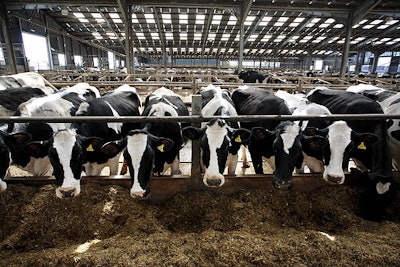The USDA’s Food Safety and Inspection Service (FSIS) has discovered viral particles of avian flu in the tissue sample of a condemned dairy cow while testing 96 culled cows at select FSIS-inspected facilities. Meat from condemned cows is prohibited from entering the food supply, and samples from the other 95 cows have tested negative for viral particles. No meat from these dairy cattle have entered the meat supply.
FSIS personnel identified signs of illness in the positive animal during post-mortem inspection and prevented the animal from entering the food supply. This type of inspection is part of routine FSIS operations.
FSIS collected multiple tissues, including muscle samples from the diaphragm, at FSIS-inspected slaughter facilities from culled dairy cattle that have been condemned for systemic diseases. The samples were analyzed by APHIS using PCR (polymerase chain reaction) to determine presence of viral particles. PCR testing does not differentiate between live virus or fragments. FSIS and APHIS are working together to conduct traceback, including notification to the producer to gather further information.
Those at the USDA say they are confident that the meat supply is safe, and the agency has a rigorous meat inspection process, which includes FSIS veterinarians who are present at all federal livestock slaughter facilities. FSIS personnel inspect each animal before slaughter, and all cattle carcasses must pass a second inspection after slaughter and be determined to be fit to enter the human food supply.
In recent weeks, the USDA collected samples of ground beef at U.S. retail outlets to test for H5N1. The samples were analyzed by APHIS using PCR to indicate whether any viral particles were present, and no virus particles were found to be present.
Also, further testing has been done on cooking ground beef with H5N1 present. H5N1 was inoculated into 300-gram ground beef patties to determine whether FSIS-recommended cooking temperatures can inactivate the H5N1 virus. The burger patties were cooked to three different temperatures (120 °F, 145 °F, and 160 °F) and results showed no virus present in the burgers cooked to 145 °F (medium) or 160 °F (well done), which is FSIS’ recommended cooking temperature. Even cooking burgers to 120 °F (rare) degrees, which is well below the recommended temperature, substantially inactivated the virus.





















